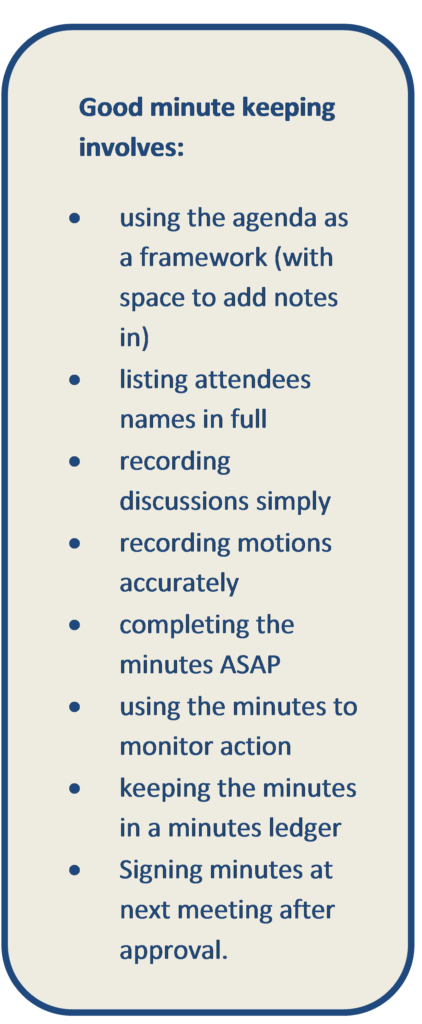Communicating With Your Team
The principal means of communication at State level is the State newsletter. In addition, most States have regular e-news/emails to keep members up to date with news, policy changes, and initiatives; these newsletters are listed in Chapter 2. The GGA and State websites are also repositories of information.
Given the comprehensive information generated at State level, you need to think carefully about what the communication procedure should be in your Region or District. It should not simply be repeating the cascade of information already received. Some Region Managers and District Managers prepare a one-page summary every month highlighting the key information but consider if this is an effective use of your time. The communication method you use might be formal, for example at a meeting, through email, or a newsletter; or fairly informal, for example by telephone, over coffee, at dinner, or via Teams/Zoom. Whatever method you choose, the members of your team should be aware of their responsibilities and the process should be efficient. Consider reviewing your communication approach annually to see if it is still meeting the needs of your team.
Meetings as a Communication Tool
 As part of your role, you will need to chair or attend a number of meetings, for example, the District meeting, Support Group meeting, Region meeting, or District Annual General Meeting. As part of your induction, confirm the meetings you are expected to attend.
As part of your role, you will need to chair or attend a number of meetings, for example, the District meeting, Support Group meeting, Region meeting, or District Annual General Meeting. As part of your induction, confirm the meetings you are expected to attend.
It’s a mistake to think meetings are primarily about getting business done. It is also the place where the culture of your District or Region is fostered – supporting each other, sharing and developing expertise, skills, friendships, and achievements. Every meeting is also an opportunity to incorporate a reflection or focus on the Girl Guide Promise and Guide Law.
The District meeting is an ideal forum to develop Leaders, both in terms of the way the meeting is run also by allocating a slot for learning. This could be a sharing time where a Leader might teach the others a new song, a skill, or an activity. Or you could schedule a discussion on a topic of direct interest such as leadership skills, Unit management, discipline in the Unit, or program ideas. Anyone can lead a discussion at a meeting – maybe you could brainstorm topics that are interesting to everyone with a different person facilitating a discussion on each area over the course of the year. It is important to include time to encourage your new leader and note her progression help required.
Above all the District meeting should be one in which everyone wants to take part and to attend. Don’t be afraid to make the meeting a purely social occasion, or to start with activities to help your team relax and get to know each other better. Even Leaders from the same Unit may not often get the chance just to relax and chat. A less structured meeting might also be the place you can really listen to and support your local Leaders.
How to be an effective meeting chair?
If you are having a formal meeting make sure the agenda is circulated in advance and you have given thought to the timeframe. To manage the meeting effectively, estimate in advance how long each item is likely to take. Where there are matters which are likely to be complex, ensure reports are tabled in advance and that everyone has a chance to contribute. Don’t be afraid to prioritise agenda items at the meeting so important items are given adequate time at the beginning of the meeting. At the meeting make sure you speak clearly and ensure all team members are given the opportunity to express their opinions.
What are the tips for minute-taking?
The minutes should be accurate and detailed enough to prevent any misunderstanding or ambiguity and be easily understood by someone not present at the meeting. At the end of the meeting ask people if they have any questions. Ensure minutes clearly flag action points, dates, and responsibilities. They should be circulated before the next meeting to give people a chance to action items. In addition to providing an accurate record of what took place and the decisions reached, minutes can form a valuable history of events. There is no need to read minutes out at the meeting if they have been circulated in advance.
A helpful tool is to provide the minute taker with a copy of the agenda with lots of space between items to take notes on. This saves them time in writing out the headings and ensures that the minutes match the structure of the agenda. If there are any items that are basically for information, this can be put straight into the prepared sheet so that the minute taker doesn’t have to write it out laboriously in the meeting but instead can focus on capturing the discussion and decisions.
Last Modified: 27/06/23 at 3:57 PM